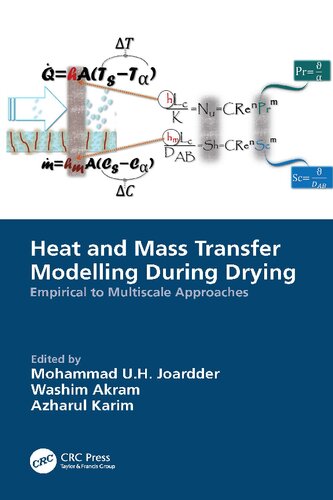

Most ebook files are in PDF format, so you can easily read them using various software such as Foxit Reader or directly on the Google Chrome browser.
Some ebook files are released by publishers in other formats such as .awz, .mobi, .epub, .fb2, etc. You may need to install specific software to read these formats on mobile/PC, such as Calibre.
Please read the tutorial at this link: https://ebookbell.com/faq
We offer FREE conversion to the popular formats you request; however, this may take some time. Therefore, right after payment, please email us, and we will try to provide the service as quickly as possible.
For some exceptional file formats or broken links (if any), please refrain from opening any disputes. Instead, email us first, and we will try to assist within a maximum of 6 hours.
EbookBell Team

4.7
46 reviewsMost conventional dryers use random heating to dry diverse materials without considering their thermal sensitivity and energy requirements for drying. Eventually, excess energy consumption is necessary to attain a low-quality dried product. Proper heat and mass transfer modelling prior to designing a drying system for selected food materials can overcome these problems. Heat and Mass Transfer Modelling During Drying: Empirical to Multiscale Approaches extensively discusses the issue of predicting energy consumption in terms of heat and mass transfer simulation.
A comprehensive mathematical model can help provide proper insight into the underlying transport phenomena within the materials during drying. However, drying of porous materials such as food is one of the most complex problems in the engineering field that is also multiscale in nature. From the modelling perspective, heat and mass transfer phenomena can be predicted using empirical to multiscale modelling. However, multiscale simulation methods can provide a comprehensive understanding of the physics of drying food materials.
KEY FEATURES
The objective of this book is to discuss the implementation of different modelling techniques ranging from empirical to multiscale in order to understand heat and mass transfer phenomena that take place during drying of porous materials including foods, pharmaceutical products, paper, leather materials, and more.